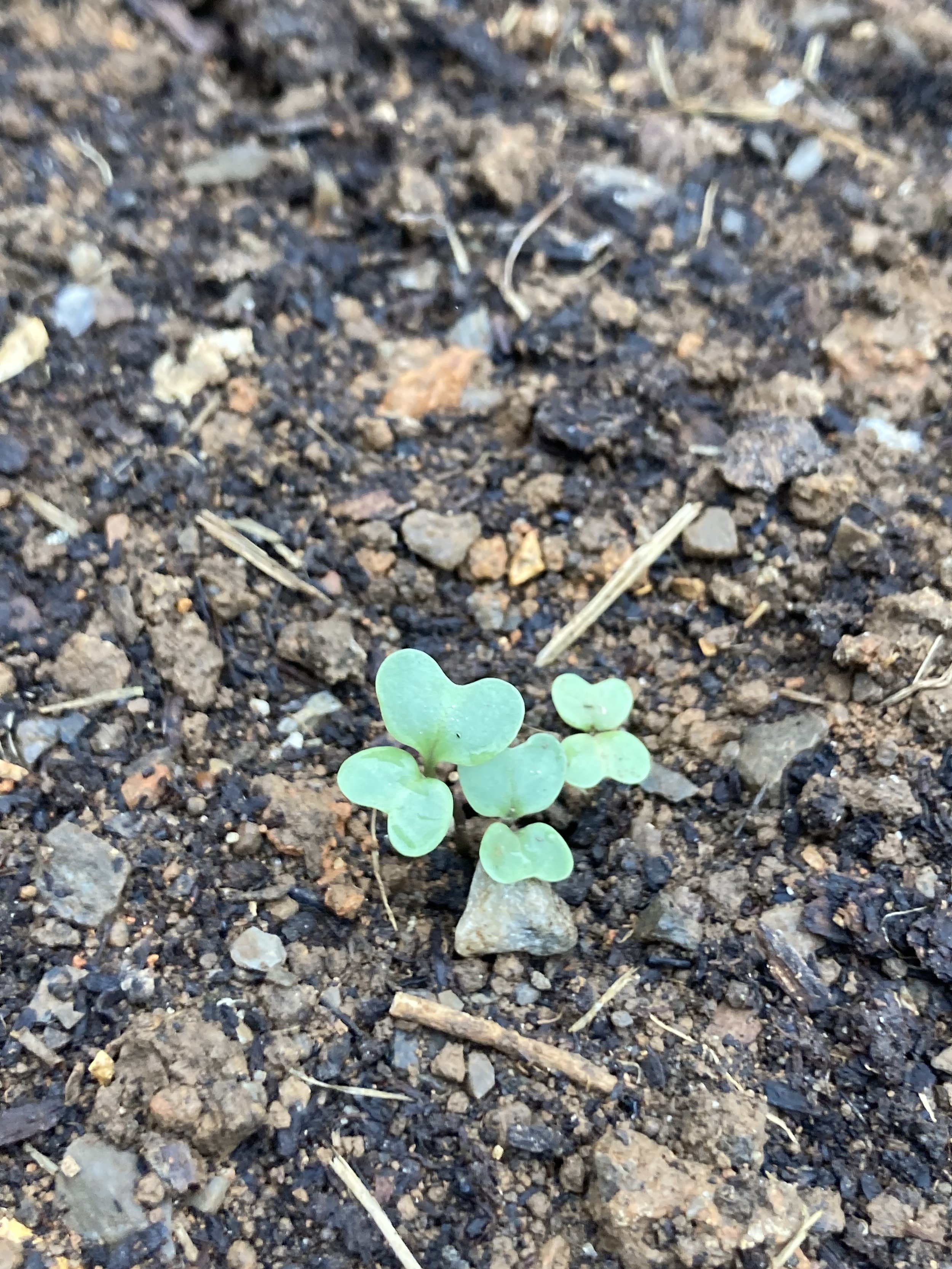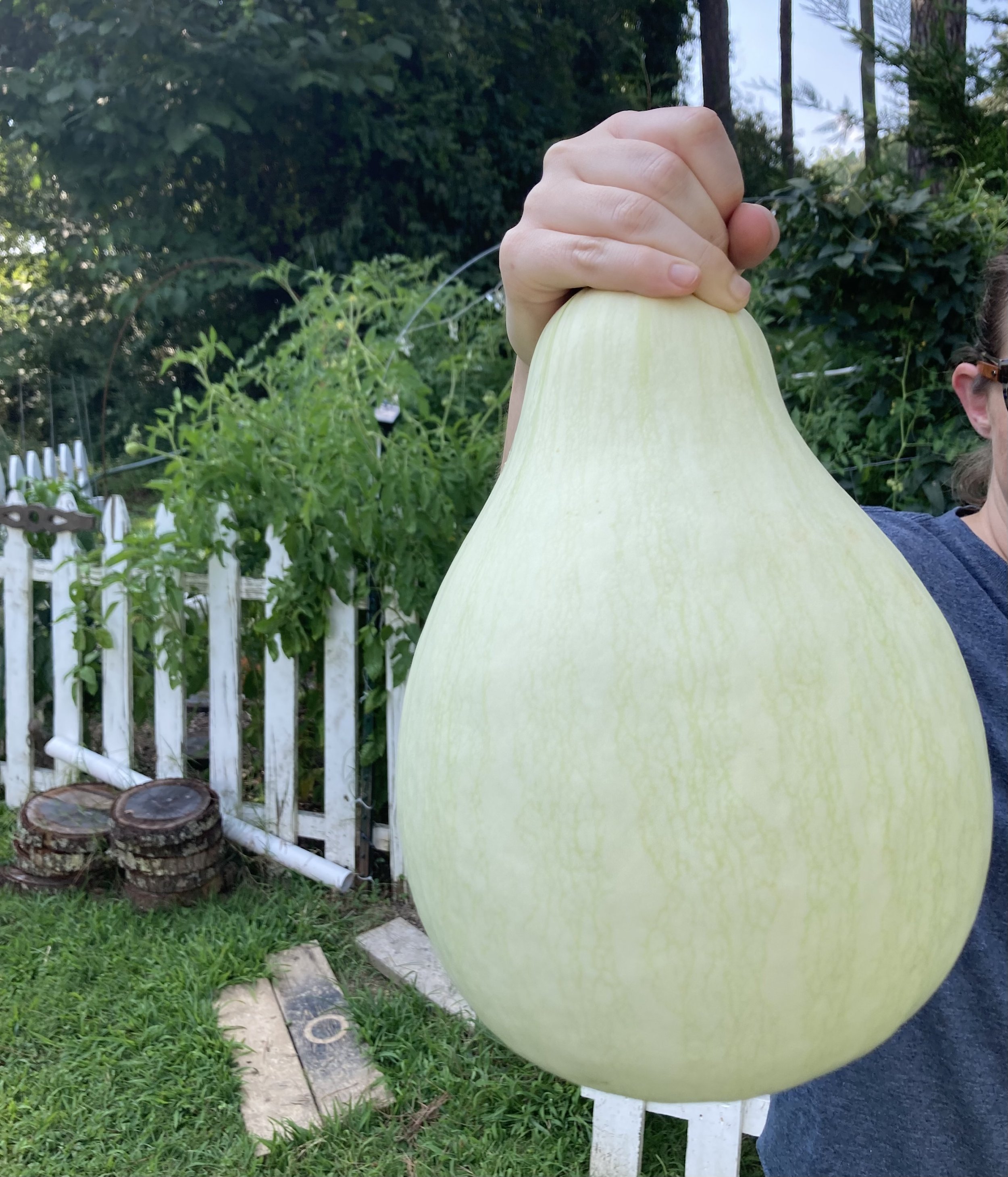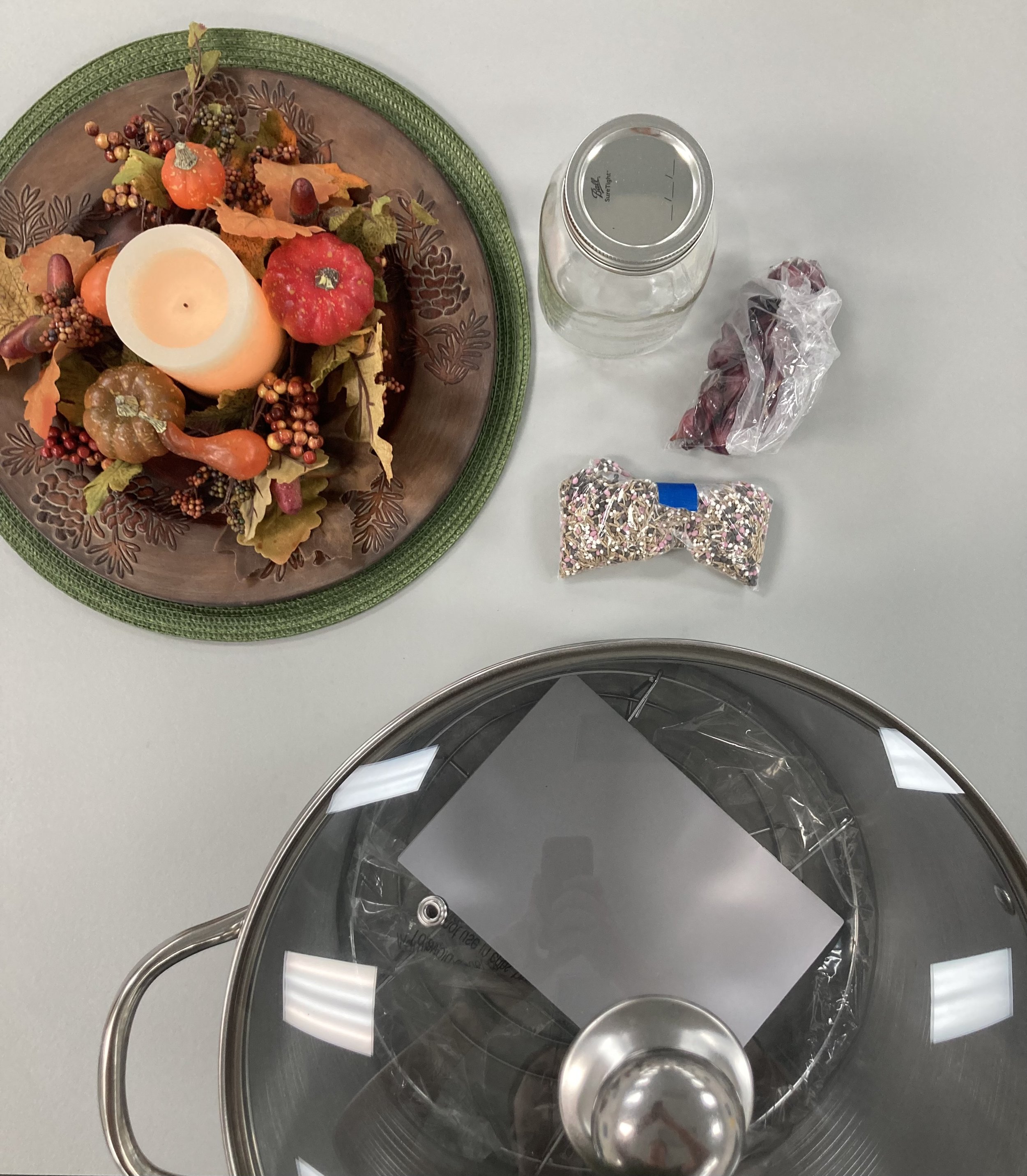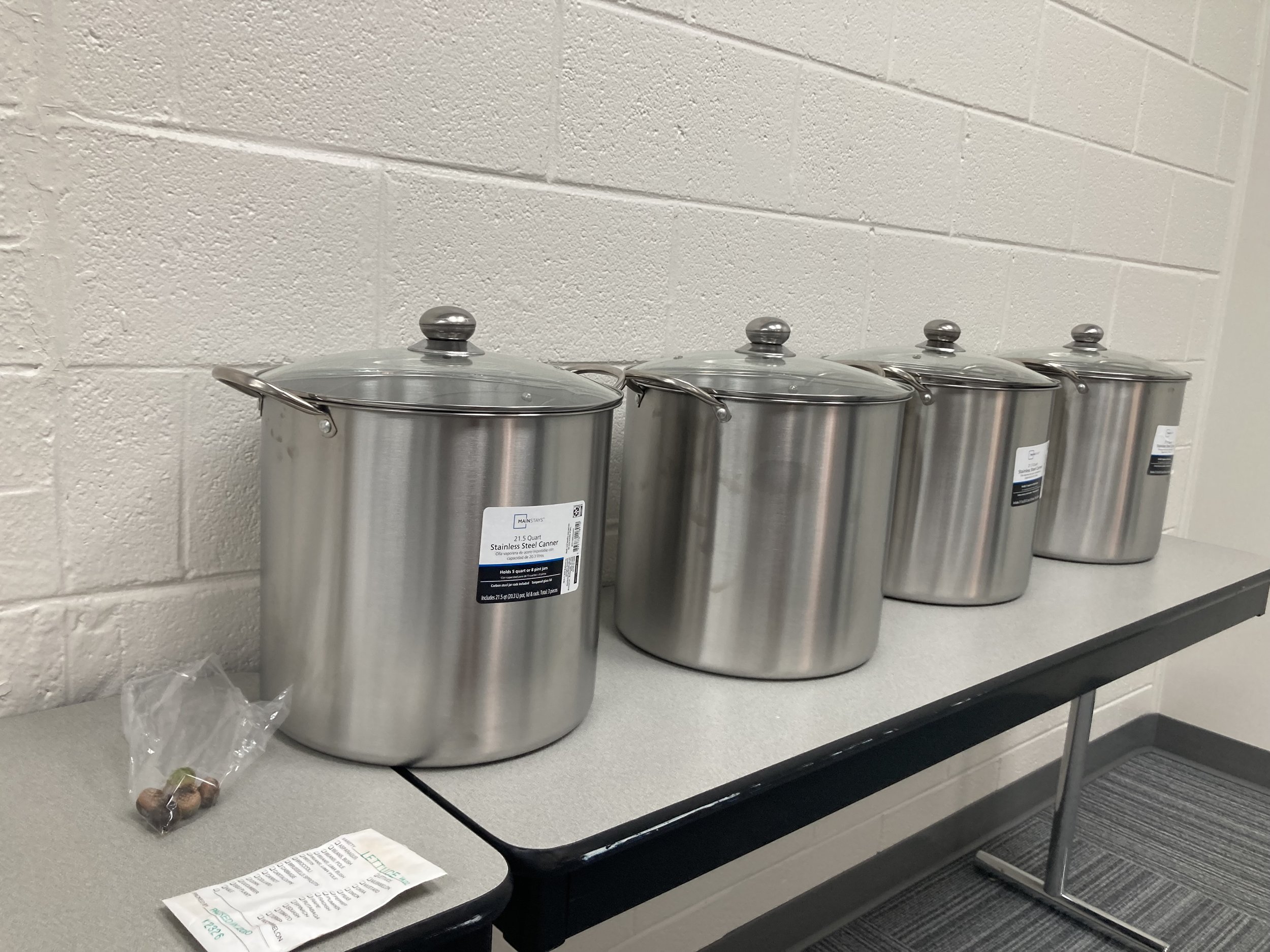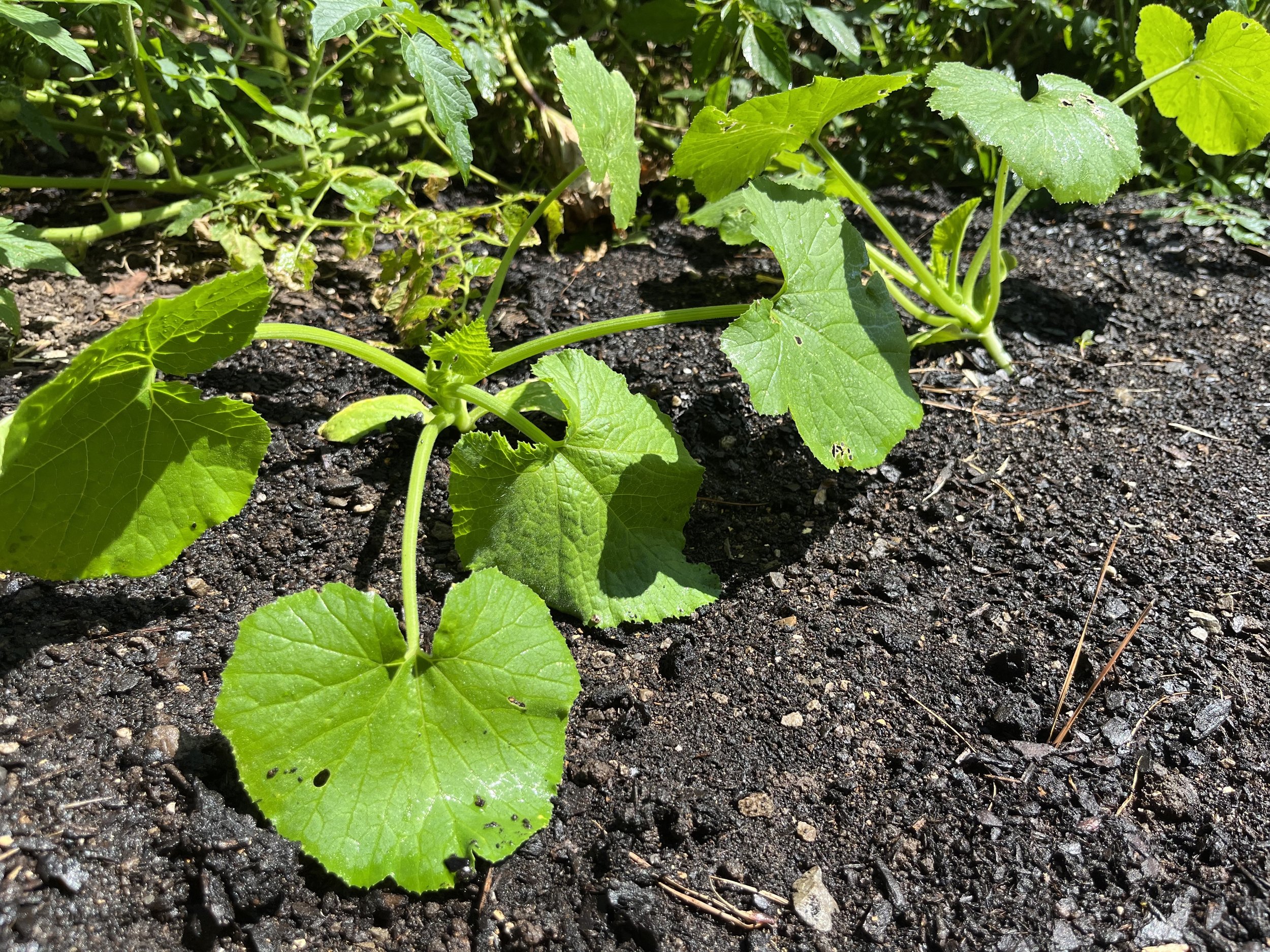
News from Grow Oak Ridge and its markets.
Upcoming garden workday+ Trialing an organic weed killer!
Hello, hello my garden friends- thanks for joining again for some “Muddy Musings”! Today I am excited to chat about our plans for our upcoming Community Workday.
Over at the community garden at First Presbyterian, Oak Ridge, we have two work days per year- one in the spring and one in the fall. The purpose of the workday is for general maintenance and tidiness; being as it is a community garden open to many different members, the workday for us ensures that all of our shared spaces are well maintained for all to continually enjoy using. The schedule for the day varies with the season, but coming up in less than two weeks we will be having our fall workday! On September 30th from 8am to 12 noon (in case you want to join ;) *wink, wink*), a group of gardeners and garden supporters will be gathering. I am so excited that we will be having quite the varied group- those who garden within the community plots, as well as some local master gardeners and other various “friends of Oak Ridge” and volunteers. It is the true spirit of a community garden, in that even those who don’t garden within its perimeter still come to support the gardeners that do! It is one of my favorite things to network within common circles and to foster community connection. It is another favorite thing of mine to see people coming together to support the growth (literally haha) of each others interests. All around, I am stoked for this upcoming workday, if you couldn’t tell.
This years fall schedule is going to be very “weed” intensive. This year, our community garden has THRIVED! Be it the steady rain we got this season, or just a little stroke of luck, the garden has been lush and abounding- including the weeds. Our biggest opponent has definitely been the Crab grass and Bermuda grass. This year, we are going to try a new (to us) way of getting our weeds under control so that they can’t continue to reseed and spread- a three step approach! The first step is to cut everything down as much as possible. We are already at work with the weed eater, getting everything within the walkways and perimeter mowed down. Second is the big step that is our “trial” which I am eager to try out! We will be using horticulture grade vinegar to spray and kill the weeds/ grass. No RoundUp needed! This vinegar is 30-45% acidity, whereas what you get at the grocery store is most often 5% acidity. You can typically acquire this horticultural vinegar at your local Home Depot, Tractor Supply, or other store of the like. Our plan is to spray the trimmed grass/ weeds with this high acidity vinegar to kill it, prior to pulling it up. Which leads me to our final, and most important step- PULLING! Now I know pulling weeds is certainly not the most exciting thing to do in the garden, however, it is arguably the most crucial of necessities. All of the previous steps to weed control would be in vain without the task of pulling the weeds up. Keeping them pulled keeps future generations of weeds at bay by taking away the ability for the existing weeds to go to seed. Even after spraying and killing everything with the vinegar, it is still good practice and due diligence to pull everything up.
I am excited to try out this high acidity vinegar and share our results in its effectiveness. It is an approved organic practice and my hope is that it will be competitively potent in comparison to its counterparts. The vinegar averages about $20 per gallon, and so depending on your weed pressure and size of your garden, it may be costly to some. An alternative option is to make a vinegar solution. I have not tried the mixture personally, however, I still believe it to be better than the alternative of mainstream chemical sprays.
The recipe for the vinegar solution is
1 gallon of 5% white vinegar
1 cup of salt
1 tablespoon of dish soap
Mix together and then spray as required. You can use a very small amount of boiling water to dissolve salt as needed.
If anyone tries out the above recipe, let us know! I will share results to our high acidity vinegar trial in the coming weeks.
As for now, happy gardening to you all! Wishing you all a lush and weed free garden, both for fall crops and for next summer season! (Because it’s never too early to dream about next years garden, haha!)
Casey
A stunning sunflower in one of our community garden plots this season
Counting Backwards to Move Forward
Grow Your Own: Backyard and Community Garden Program Update
On September 7th, we had our end of season potluck. One of our gardeners brought a propane griddle and cooked outside. We gathered around the griddle, gathered around the table, making connections, having fun conversations, moving indoors and outdoors. Our gardeners swapped stories about canning, pickling, and what we are doing in our fall gardens. It was a great time to gather and build community. I loved hearing people share with each other what they have done this season, for instance, different varieties of tomatoes and trellising techniques. Our gardeners received water bath canners, cover crop seed mixes, and onion bulbs!
During the remainder of our August garden visits and this September, we have been discussing what we are planning to season extend, where to plant fall crops, and how to make the transition into a fall garden. It is hard to let go of the warm season crops that have given us so much! Sometimes it feels like it's best to just rip the bandaid off and wish them well in order to welcome something new.
We added 4 more families to the Grow Your Own program in partnership with the Y12 Gives Foundation, which will strengthen our program for the coming year by allowing 4 more families the space and supplies to get growing in the Welcome Garden at First Presbyterian Community Garden. We had a workday where they got their fall gardens planted early this September.
For the fall, our gardeners got carrots, radish, kale, broccoli, turnips, beets, lettuce, and spinach seeds. I’ve been keeping track of the days until our first expected frost around October 27th and reminding our gardeners that it is not too late to plant several of their fall crops! As I am writing this, we are 42 days away. Drawing close, but not too late to plant radishes, lettuces, and other crops with shorter days to maturity.
A Hopeful Gamble
Follow along with Casey as she plants zucchini in late August to see if they will provide a crop before the first frost… a garden gamble against time!
Hello garden friends! I am Casey, the Community Garden Coordinator over at First Presbyterian. I am excited to begin contributing to our garden blog here, and so thankful you’ve dropped in! I have grown up gardening, however, am wrapping up my second season as a fully solo gardener (without the oversight of my dearest Gram). I hope you enjoy as I share my experiences with you, and can laugh with me as I learn along the way. Without further ado, here are some of my “Muddy Musings.”
***
Everyone loves a guaranteed win- especially with the garden. From pest pressure to ever-changing weather patterns, sometimes all a gardener wants is the guarantee that they will reap a worthwhile crop. And yet, I have found myself gambling with the garden gods to see if I can beat the system.
“What have you done Casey?” you ask. Well, I have planted zucchini in August… I know, I know- let me back up.
I did not initially plant zucchini this year, simply because I expected a good tomato crop and to be honest, I just didn’t feel set up to be able to handle both a boatload of tomatoes AND a mountain of zucchini. I am still dipping my toes into canning and preserving, and I have small children running around, and a small kitchen, and a small garden, and so I wanted to make the use of my space(s) and also not grow more than what I knew I could successfully put up. So, we were doing good, trucking right along, and we’ve been harvesting tomatoes left and right (my toddler revels in the sun-warmed tomatoes straight off the vine). As I mentioned, I have a small plot and I try to utilize every. last. inch. In my current set-up, I am a big fan of square foot gardening as opposed to rows, although I don’t have much rhyme or reason- simply tuck things in wherever they might have a smidge of space. This year, as produce has begun to slow down, I have been quick to pull tired plants and make way for new things to be sown. It was there I found myself one day in late August, with a bag of seeds and more freshly cleared ground than I was anticipating, counting on my fingers how many days to maturity various plants had and comparing it to the (then) 70-ish days until the anticipated first frost. Zucchini, having about 55 days to maturity was my clear (and only) winner. And so, four little seeds got tossed into an empty space without much emotional attachment to their success, and I moved on sowing carrots and harvesting more tomatoes.
A few days later, it was an absolute shock when each of my four haphazard zucchini seeds had successfully germinated AND were rapidly growing. Immediately, I abandoned my “eh, if they make it, they make it” attitude and I wanted them to win. There is something invigorating to me about seeing seedlings burst forth, and I got so pumped about the potential of eating risky zucchini fresh from the garden in the middle of October.
I have a few various hopes; the first is that perhaps our first frost comes a little later than anticipated and that I am able to reap fruit for at least two weeks before my plants inevitably perish. My second hope is one more of curiosity, in that my plants will be healthier with less pest pressure than in the middle of the summer growing season. Being as there is only one generation of vine borers every year, I hope that they have passed us by and with a later plant I will have missed their dreaded presence entirely. The last hope I have on the matter is simply that the space in which I have planted will have enough sustained nutrients to help the zucchini flourish. I planted in the empty space of my first year potatoes upon a pile of compost-rich soil that was freshly aerated via potatoes. While I realize both are heavy feeders, I have been fertilizing, supplementing, and amending soil all season long. Hopefully, my TLC through the season will carry over into the vigorous growth of some October Zuchs!
I have considered trialing staking my zucchini up a pole (YouTube it!) to see what that does for the plant and the fruit, but I also might just leave it and let it go, seeing as we’re already working against the odds and the season. If I actually reap zucchini this fall, even if it’s no more than three fruits, I would be ecstatic. I am excited to keep you all in the loop and share my progress and my (hopeful) success! I will say, it has become quite the paradox to go to the garden and see things slowly withering and then off to the side, my zucchini getting bigger by the day! Fingers crossed for the green guys, and I’ll be sharing updates soon. I have attached some pictures below of a few weeks of progress just within the first month! Make sure to check them out.
And so concludes this weeks muddy musings- wishing you all a good time in a garden- anyones, anywhere, just somewhere! Get outside! Get muddy!
Casey
Germination success! One week after planting
Two weeks after planting
Three weeks after planting







